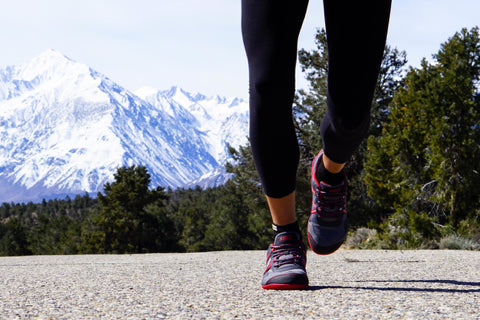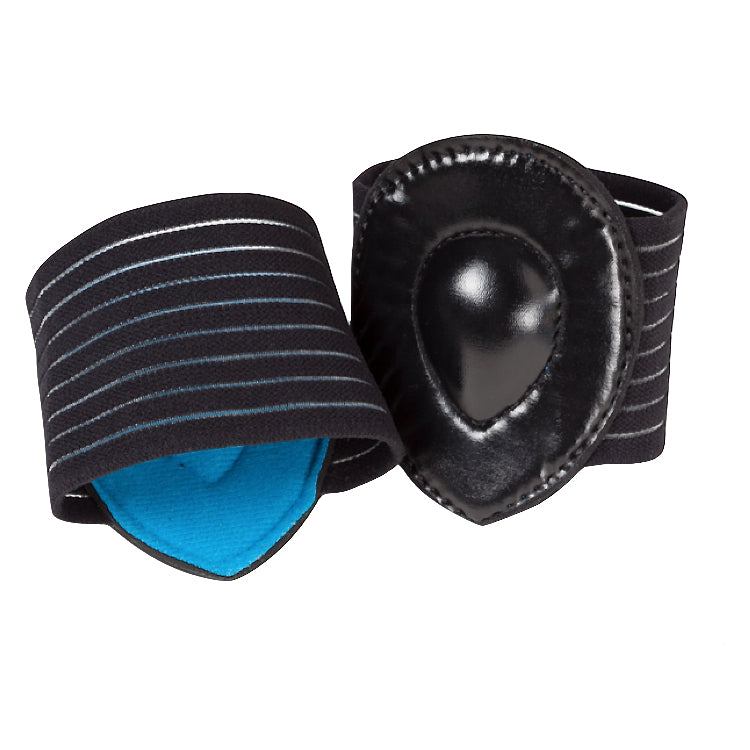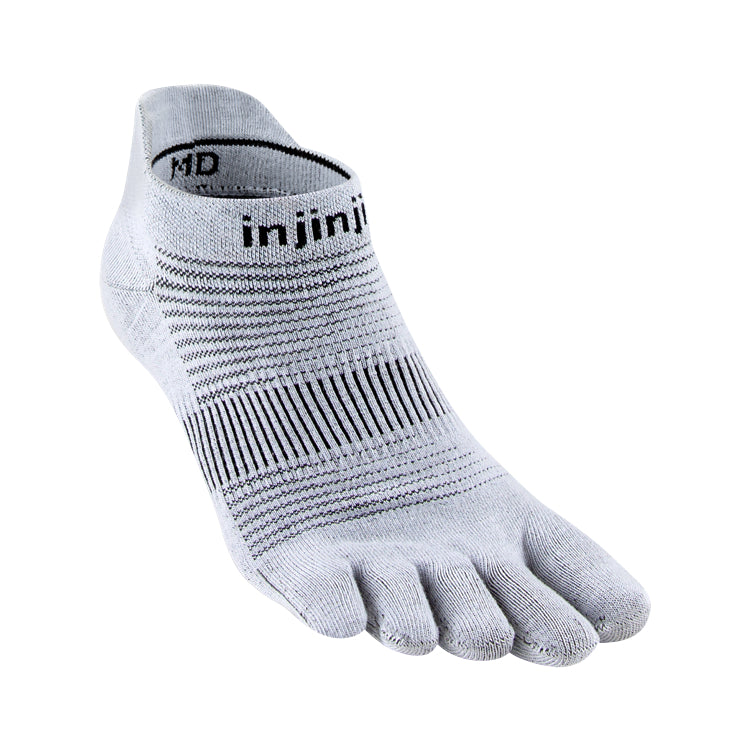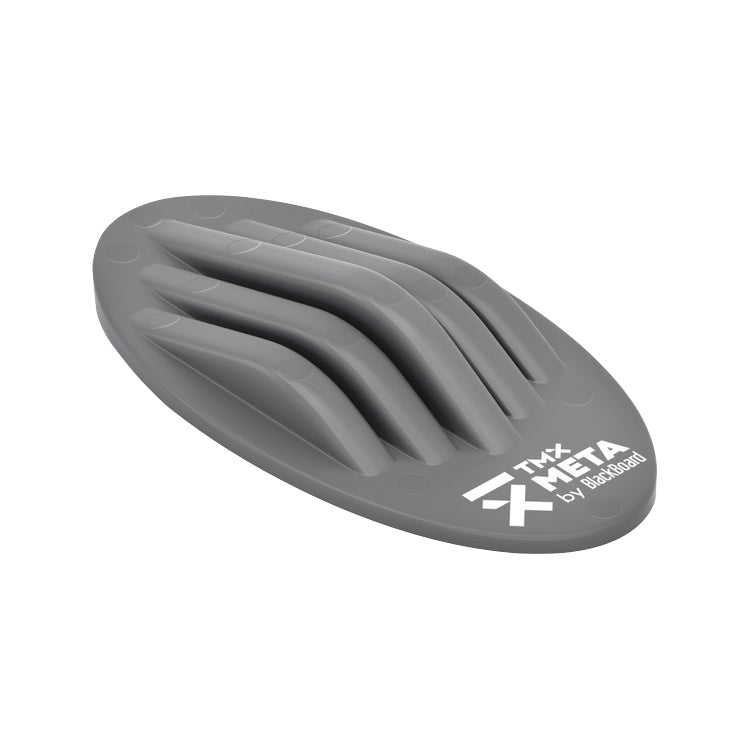
Outer foot pain is a symptom that may occur in runners, especially runners who record high weekly mileage or who use conventional athletic footwear. Numerous factors may contribute to outer foot pain in runners, including running shoes that contain injurious design features, excessive training (i.e., overtraining), an insufficient warm-up, and poor nutrition. Outer foot pain, while potentially debilitating for runners, typically responds to natural, noninvasive, and conservative therapies, such as proper shoe selection, certain physical therapy modalities, and taping procedures, along with rest and thermal (i.e., hot/cold) therapies.
Here are three potential causes of outer foot pain in runners:
Cause #1: Stress Fractures
Stress fractures are overuse injuries that occur when foot muscles become fatigued and are no longer able to absorb the shock of footfalls. When the foot muscles are unable to effectively absorb the shock of prolonged and repetitive foot strikes, the stress forces are then transferred to bone, which can lead to the formation of a small crack in one of the weight-bearing bones of the lower leg or foot. Long-distance runners who wear conventional running shoes are particularly susceptible to this type of injury. Common symptoms associated with foot stress fractures include pain, tenderness, and swelling in the involved area during physical activity. Stress fractures in runners typically occur in the lower leg and foot, including the outer portion of the foot. A stress fracture of the fifth metatarsal bone—a short, thin bone that links the fifth toe to the cuboid bone—can cause pain on the outer side of the foot. X-rays of the injured area typically do not reveal evidence of a fracture until the fracture begins to heal two to three weeks after the injury occurred. Suspected stress fractures should be treated with six to eight weeks of rest. Crutches can be helpful in some cases.
Cause #2: Friction Blisters
Friction blisters may cause pain on the outer aspect of the foot, especially the heel. With friction blisters, the outer layer of skin peels away from the inner layers, and the potential space between these layers fills with lymph fluid. Runners may develop friction blisters when shoes or socks continuously rub against the skin. While blisters on the outside portion of the heel are common in runners wearing new shoes (inappropriate footwear is a leading factor in the formation of friction blisters) or those participating in long-distance events, such as the marathon, you can prevent blisters by ensuring that your footwear is as foot-healthy as possible (i.e., flat, flexible, and wide enough to accommodate your foot without chafing), by keeping your feet as dry as possible, and by using a second skin dressing to cover your problem area at the first sign of a blister.
Cause #3: Peroneal Tendinitis
Peroneal tendinitis is another possible cause of outer foot pain in runners. Peroneal tendinitis involves inflammation in one or both of the peroneal tendons. The two peroneal tendons run side by side behind the foot's lateral malleolus, or the bony bump on the outside aspect of the ankle. The main functions of the peroneal tendons are to stabilize the foot and ankle and guard against ankle sprains or ligament damage. Inflammation in these tendons occurs after excessive and repetitive use (e.g., overtraining in runners). Common signs and symptoms associated with peroneal tendinitis include swelling, warmth in the involved area, and pain on the outside part of the ankle (or pain along the outside edge of the foot, up to the base of the fifth metatarsal bone). Acute tears in one of the peroneal tendons can also occur as a result of repetitive activity or trauma and may cause the following immediate symptoms: pain, swelling, and foot and ankle weakness or instability.
Conclusion
Outer foot pain is usually an indication of an underlying foot problem that needs to be addressed by a healthcare provider. If you're experiencing pain on the outside aspect of your foot, and if it's preventing you from enjoying your favorite physical activities, please consider scheduling an appointment with a foot care professional in your area.

WANT TO IMPROVE YOUR FOOT HEALTH?
Let the team at Natural Footgear help you! Subscribe to our newsletter for the latest offers and helpful info, and sign up for our FREE email courses on various topics and foot health conditions.
Sign Up →
Want to Improve Your Foot Health?
We are here to help you every step of the way. Get our newsletter for the latest offers and helpful info, and sign up for our FREE email courses on various topics and conditions, including bunions, hammertoes, neuromas, plantar fasciosis, shin splints, ingrown toenails, and more.
Sign Up →
 Running is a type of moving, or dynamic, meditation, and I, like many others, run to recalibrate my outlook on life, center my wandering mind, and spend time in the invigorating “flow” state so often experienced by athletes, gamers, musicians, and other performers. There is something so fundamental and primal about running; indeed, our ability (and willingness) to run long distances is something that sets us apart from all other...
Read more
Running is a type of moving, or dynamic, meditation, and I, like many others, run to recalibrate my outlook on life, center my wandering mind, and spend time in the invigorating “flow” state so often experienced by athletes, gamers, musicians, and other performers. There is something so fundamental and primal about running; indeed, our ability (and willingness) to run long distances is something that sets us apart from all other...
Read more











